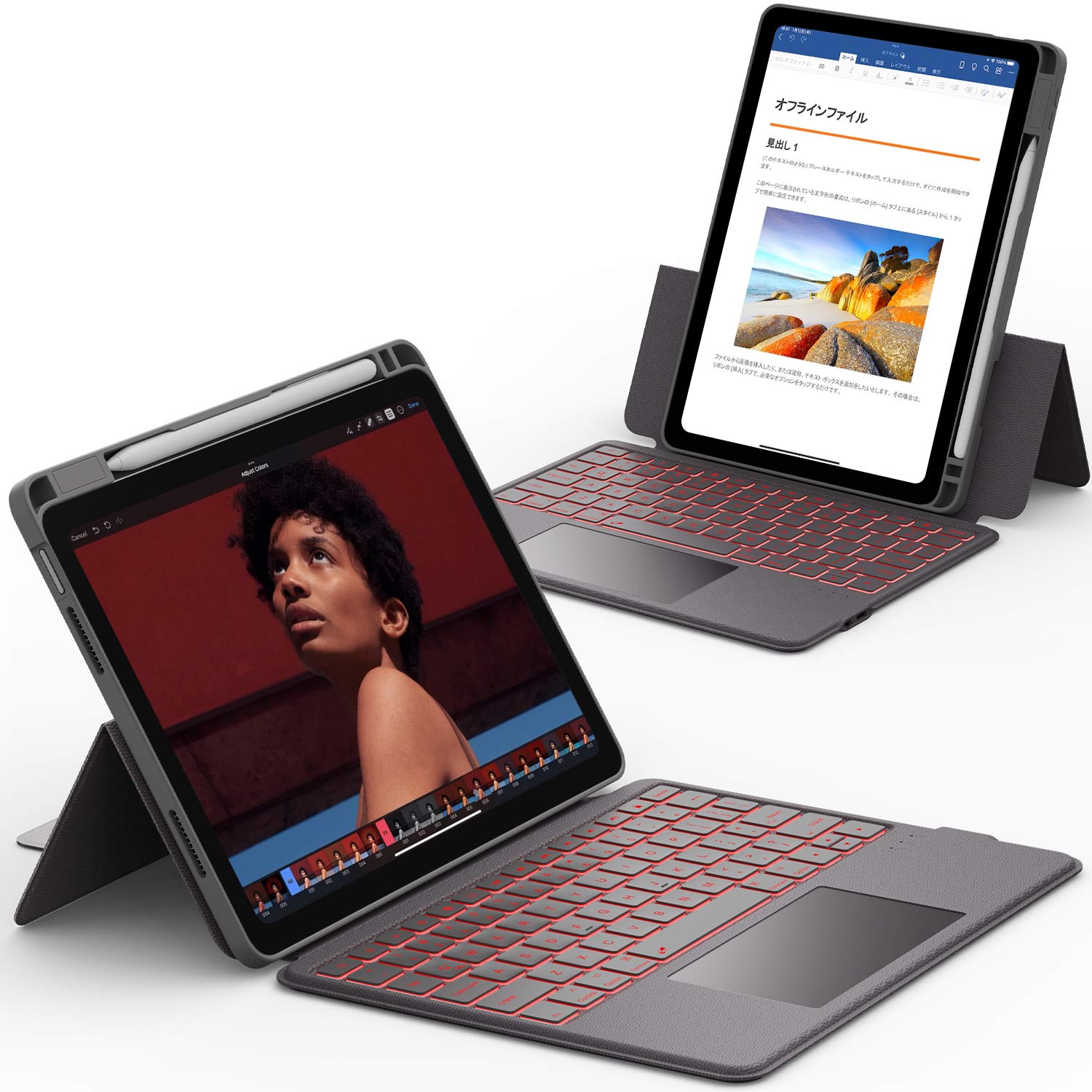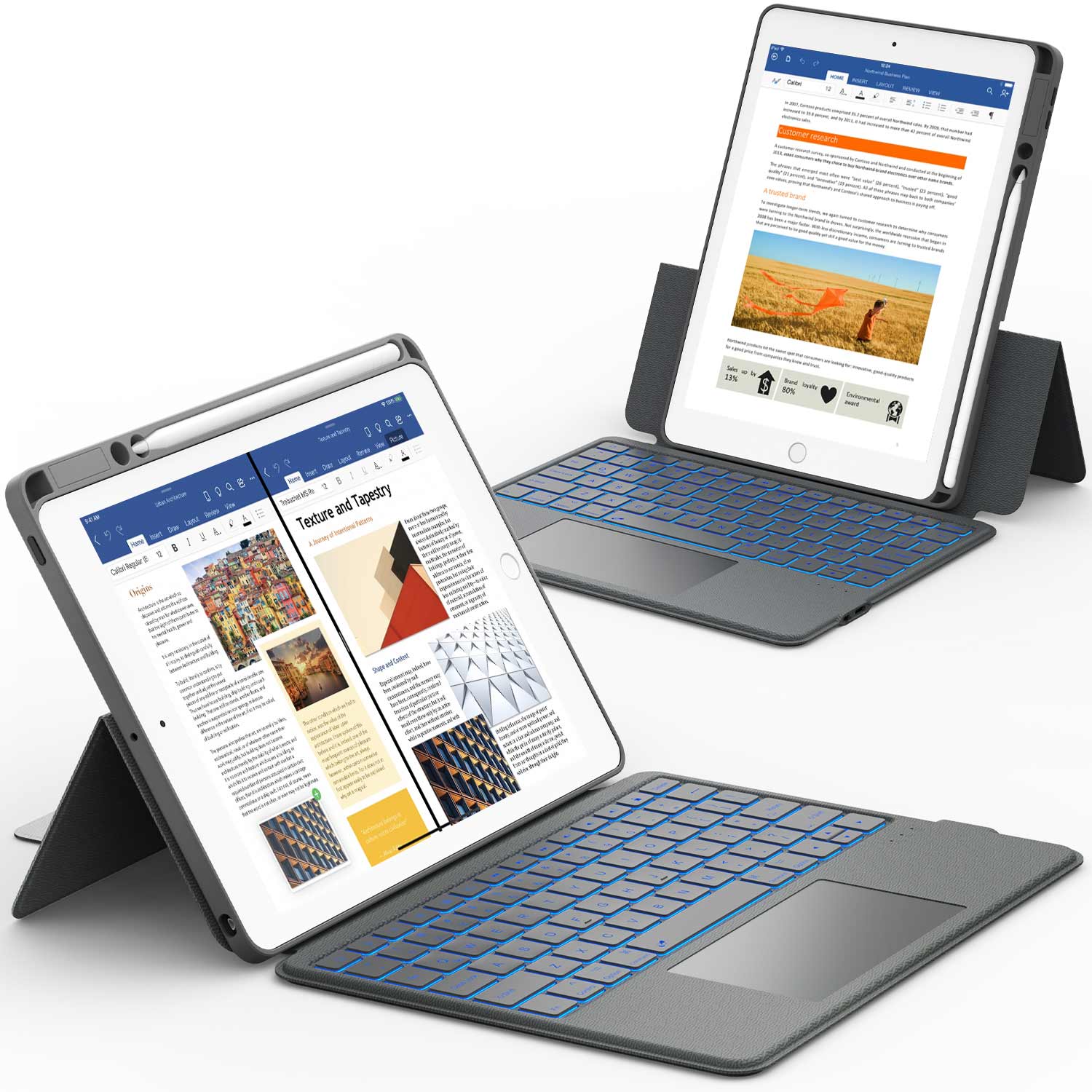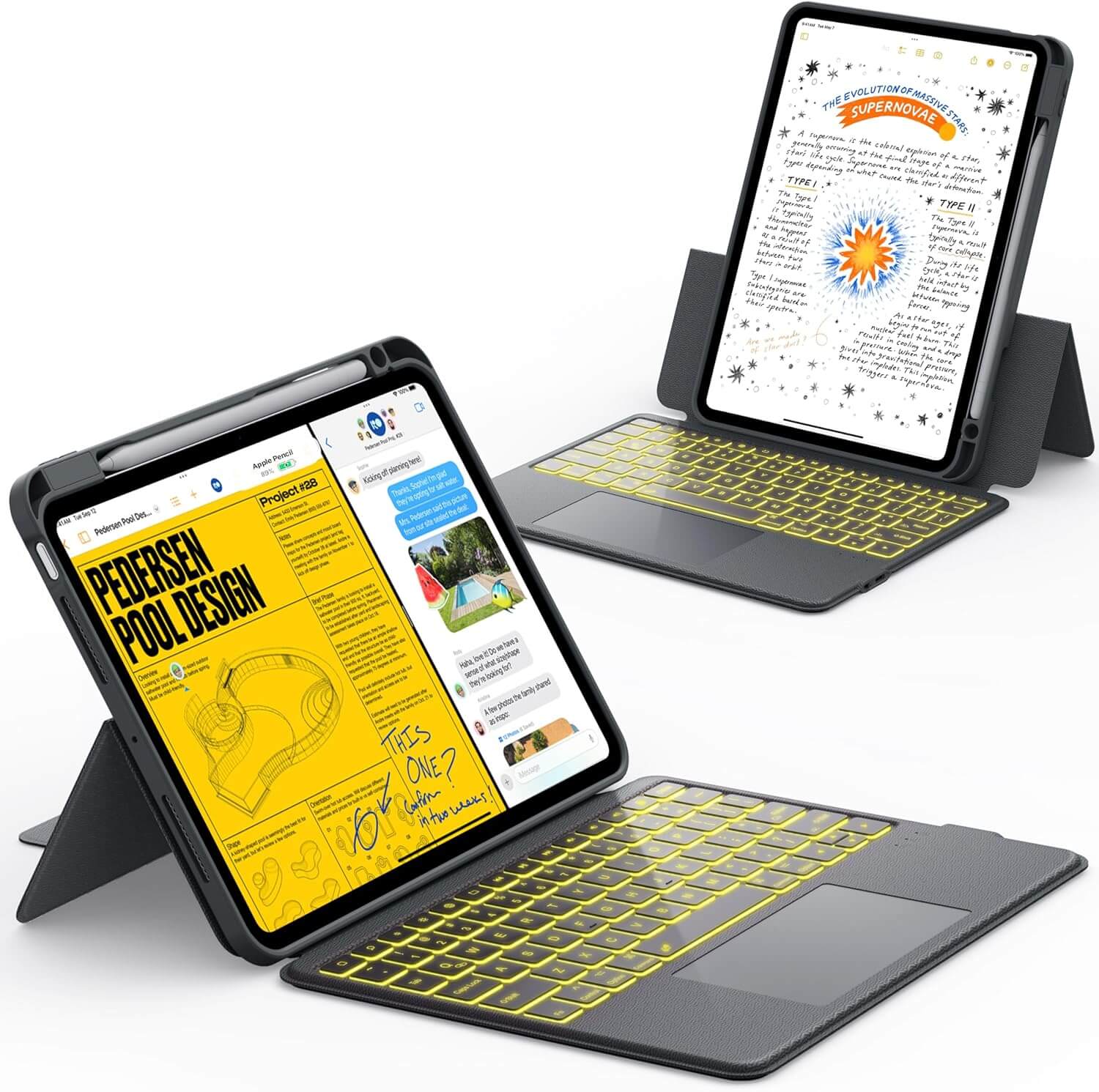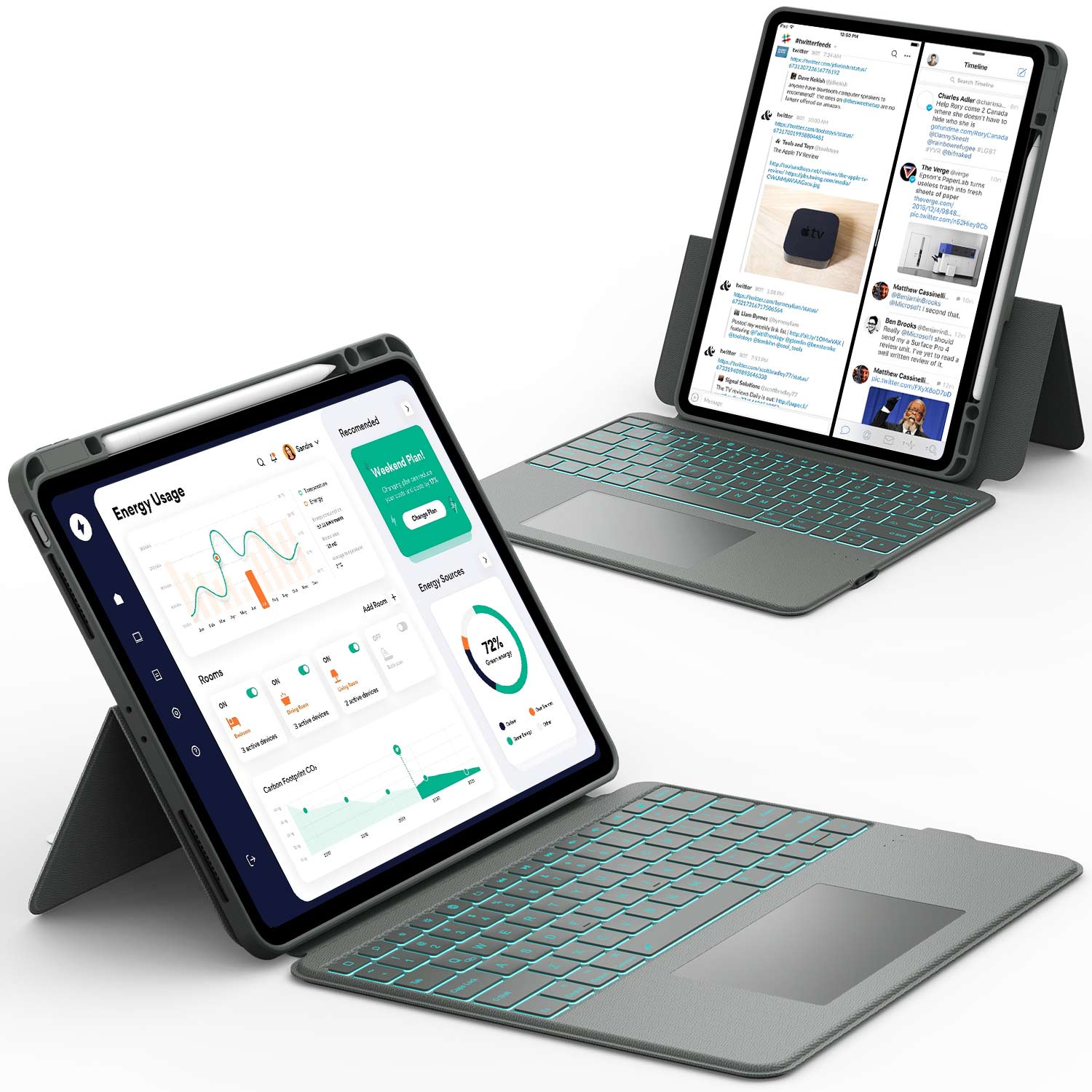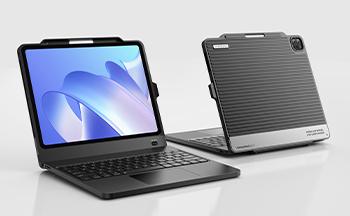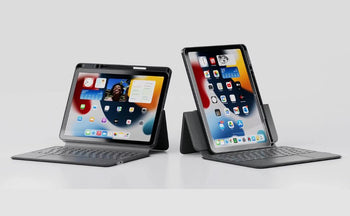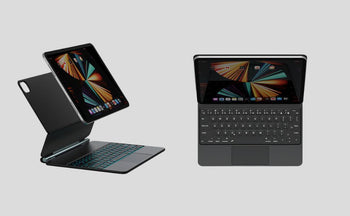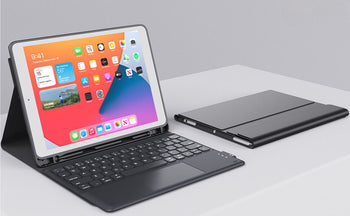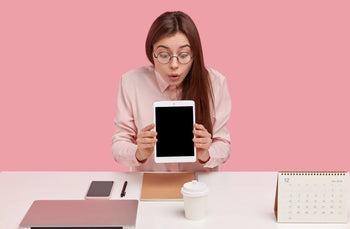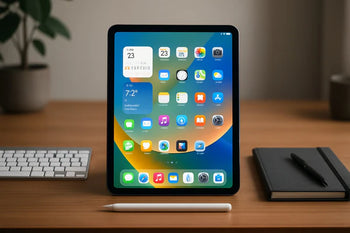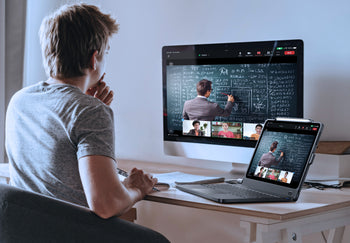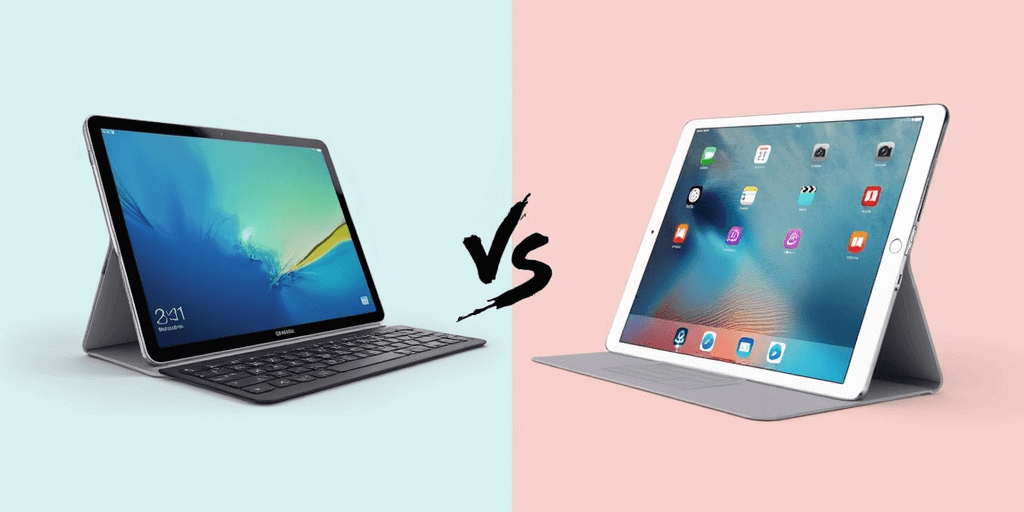Thinking about getting a new tablet but not sure whether to go with a Samsung or an iPad? It's a common question, and honestly, both are great. But they definitely have their own strengths and weaknesses. We're going to break down the 5 key differences: Samsung Tablet vs iPad, so you can figure out which one is the best fit for what you need.
Key Takeaways
- iPads generally have more powerful processors, making them better for demanding tasks like video editing.
- Samsung tablets often feature OLED screens, which provide deeper blacks and more vivid colors, great for watching movies.
- iPadOS is known for its smooth, user-friendly experience and optimized apps, while Android on Samsung offers more customization.
- Apple's accessory ecosystem is very integrated, but Samsung also has good options, including the S Pen often included.
- iPads tend to offer longer battery life and extended software support, potentially making them last longer.
1. Performance

Okay, let's talk performance. This is where things get interesting, especially if you're planning on doing anything beyond just browsing the web or watching videos. I mean, both Samsung and Apple make tablets that can handle those basic tasks just fine. But when you start pushing them with more demanding stuff, that's where you really see the differences.
Apple's iPads, especially the ones with the M-series chips, tend to have a significant edge in raw processing power. It's not just marketing hype; those chips are seriously impressive. Samsung tablets, usually running Snapdragon processors, are no slouches, but they often can't quite keep up with the iPad's performance, especially when it comes to heavy-duty tasks like video editing or gaming. The iPads with their M1 and M2 chips are really something else.
Think of it this way:
- iPads are like sports cars – they're built for speed and can handle pretty much anything you throw at them.
- Samsung tablets are more like reliable sedans – they're great for everyday use and can still pack a punch when needed, but they might not win any races.
- It really depends on what you need the tablet for. If you're a creative professional or someone who needs a lot of processing power, the iPad is probably the better choice. If you're just looking for a tablet for casual use, a Samsung tablet might be a better value.
I remember trying to edit a 4K video on an older Samsung tablet, and it was a pretty frustrating experience. The video kept stuttering, and it took forever to render. When I tried the same thing on an iPad Pro, it was smooth as butter. That really showed me the difference in performance.
Ultimately, the best tablet for you depends on your individual needs and budget. But when it comes to sheer power, Apple's iPads are hard to beat.
2. Display

Okay, let's talk screens. This is where things get interesting, and honestly, a bit subjective. What looks good to one person might not impress another, but there are some key differences to point out.
Samsung has been pushing OLED technology in their tablets for a while now, and it really shows. You get those super vibrant colors and deep blacks that make everything pop. iPads, on the other hand, have traditionally stuck with LCD screens. However, the Pro models are stepping up their game with mini-LED tech, which is a nice improvement, offering better contrast and brightness compared to standard LCDs.
It really boils down to personal preference. Do you want those super saturated colors that OLED provides, or do you prefer the more natural look that you often get with LCD, even if it's not quite as eye-catching? Also, consider where you'll be using the tablet. OLED screens can sometimes struggle a bit in direct sunlight, while LCDs tend to handle bright conditions better.
Ultimately, the best display is the one that looks best to you. Consider what you'll be using the tablet for, and try to see both in person if possible before making a decision.
Here's a quick rundown:
- Samsung: Generally uses OLED, known for vibrant colors and deep blacks.
- iPad: Primarily LCD, Pro models use mini-LED for improved contrast.
- Brightness: LCD often wins in direct sunlight.
- Color Accuracy: Both can be excellent, but may vary depending on the specific model and calibration.
Samsung also offers a wider range of screen size options, which can be a big deal depending on what you plan to do with the tablet. If you want something super portable, Samsung might have an edge. If you're after a larger screen for creative work, both brands have options, but it's worth comparing the specific dimensions and resolutions.
3. Software
Okay, let's talk software. This is where the rubber really meets the road, and where you'll see some major differences between Samsung tablets and iPads. It's not just about the operating system itself, but also the whole ecosystem of apps and services that come with it.
First off, iPads run iPadOS, which is basically a modified version of iOS (the iPhone operating system). Samsung tablets, on the other hand, use Android, with Samsung's One UI on top. This skin changes the look and feel of Android quite a bit, adding its own features and customizations. Some people love it, some people hate it – it really comes down to personal preference.
Here's a breakdown of some key software differences:
- App Ecosystem: This is where Apple usually wins. The App Store generally has a wider selection of tablet-optimized apps, especially for creative professionals. While the Google Play Store has improved, it still lags behind in this area. If you're looking for drawing software or video editing apps, the iPad might be a better bet.
- User Interface: One UI on Samsung tablets is known for its customization options. You can tweak almost everything, from the color scheme to the navigation gestures. iPadOS is more rigid, but some would say it's also more intuitive and polished. It really depends on whether you like to tinker or prefer something that just works out of the box.
- Software Updates: Apple has a pretty good track record of providing timely software updates for its iPads, often for many years. Android updates can be a bit more fragmented, with the speed and duration of updates depending on the manufacturer and the specific tablet model. Samsung has gotten better about this, but it's still something to consider.
- Multitasking: Both iPadOS and One UI offer multitasking features like split-screen and floating windows. However, the implementation is a bit different. Some people find iPadOS's multitasking more intuitive, while others prefer One UI's flexibility. It's worth trying both to see which one clicks with you.
Ultimately, the best software experience depends on your individual needs and preferences. If you're heavily invested in the Apple ecosystem, an iPad might be a natural choice. If you prefer Android's open-source nature and customization options, a Samsung tablet could be a better fit. It's worth checking out the firmware upgrade tool to keep your device up to date.
4. Accessories

Okay, let's talk about the fun stuff – accessories! This is where things get interesting, and honestly, can make or break your tablet experience. It's not just about having a tablet; it's about what you can do with it, right?
When it comes to accessories, both Samsung and Apple have a lot to offer, but there are some key differences. It's like choosing between two different toolboxes – both have tools, but some are better suited for certain jobs.
Samsung has really stepped up their game in recent years, offering a wider range of accessories that are often more affordable than Apple's. But does cheaper always mean better? Let's take a look.
- Keyboards: Both offer keyboard attachments, but Samsung's often come with a trackpad included, which is a nice bonus. Apple's Magic Keyboard is sleek, but you're paying a premium.
- Styluses: The S Pen is included with some Samsung tablets, which is a huge plus. Apple's Pencil is sold separately and is quite pricey. If you're into drawing or note-taking, this is a big factor.
- Cases: Cases are everywhere, but finding a good quality, durable case can be tricky. Both brands have official cases, but third-party options are plentiful and often cheaper.
Choosing the right accessories can really transform your tablet from a simple media consumption device into a productivity powerhouse. Think about what you want to do with your tablet and choose accordingly.
Ultimately, the best accessories for you will depend on your needs and budget. Do some research, read reviews, and don't be afraid to try out a few different options before settling on what works best for you. Consider the wide range of accessories available for iPads, but also explore what Samsung has to offer. You might be surprised!
5. Battery
When it comes to keeping your tablet powered up, there are some differences between Samsung and Apple. Let's break it down.
Battery Size and Capacity
Okay, so on paper, the Galaxy Tab often looks like it might have an edge. For example, the Tab S10 FE comes with an 8000 mAh battery. The iPad A16 has a slightly smaller battery, around 7600 mAh. That's a 400 mAh difference. Does that mean the Samsung automatically wins? Not necessarily.
Real-World Usage
Here's where things get interesting. While the Galaxy Tab might boast a bigger number, iPads are known for their efficient power management. You might find that an iPad can squeeze more out of its battery in everyday use. It really depends on what you're doing. If you're just browsing the web or watching videos, both tablets should last a good amount of time – think 10 hours or so. But if you're gaming or using other power-hungry apps, the iPad's optimized software could give it an advantage.
Charging Speed
Samsung often includes fast charging in their Galaxy Tabs. This means you can juice up your tablet much quicker than you might expect. Apple has been a bit slower to adopt super-fast charging, though they are catching up. So, if you're someone who needs to top up their battery in a hurry, the Galaxy Tab might be the better choice. It's all about how quickly you need to get back to 100%.
Ultimately, battery life is super subjective. It depends on your usage habits, screen brightness, and the types of apps you use. Both Samsung and Apple make tablets with solid battery performance, but the winner really depends on your specific needs.
Conclusion
Maximize Your Tablet’s Potential with Chesona
No matter whether you choose an iPad or a Samsung tablet, a Chesona keyboard case can take your device to the next level. With sleek designs, 7-color backlit keys, and compatibility with iPad Pro, iPad Air, and Samsung Galaxy Tab models, Chesona offers affordable, high-quality keyboard cases that make typing, working, and creating a breeze.
So, when you're trying to pick between an iPad and a Samsung tablet, it really just comes down to what you need it for. If you're all about super smooth performance and having a ton of cool apps for creative stuff, the iPad is probably your best bet. But, if you're looking for something that gives you more bang for your buck, especially with a great screen for watching movies, then a Samsung tablet could be the winner. Both are good, it's just about what fits your life better.
Frequently Asked Questions
Which tablet is better for everyday use?
For everyday tasks like browsing the internet, watching videos, and using social media, both iPads and Samsung tablets work great. If you need to do more complex things like professional video editing or graphic design, iPads often have a bit more power.
Which tablet lasts longer?
Generally, iPads tend to hold their value longer and receive software updates for more years. This means an iPad might feel new and work well for a longer time compared to a Samsung tablet.
Can I add more storage to my tablet?
Samsung tablets usually offer more flexibility with storage, often letting you add a small memory card to get more space. iPads don't have this option, so you need to pick the right storage amount when you buy it.
What's the main difference in their operating systems?
iPads use Apple's own iPadOS, which is known for being very smooth and having apps that work perfectly with the device. Samsung tablets use Android, which is more open and lets you customize things more, but sometimes apps aren't as polished.
Which tablet works best with my other devices?
If you already have an iPhone or a Mac computer, an iPad will likely connect and work seamlessly with those devices. Samsung tablets are a better fit if you use Android phones or Windows computers, as they integrate well within that ecosystem.
Which tablet is better for watching movies?
For watching movies, many Samsung tablets use OLED screens, which show deeper blacks and more vivid colors, making movies look fantastic. iPads also have great screens, especially the Pro models, which are excellent for detailed work like drawing.
